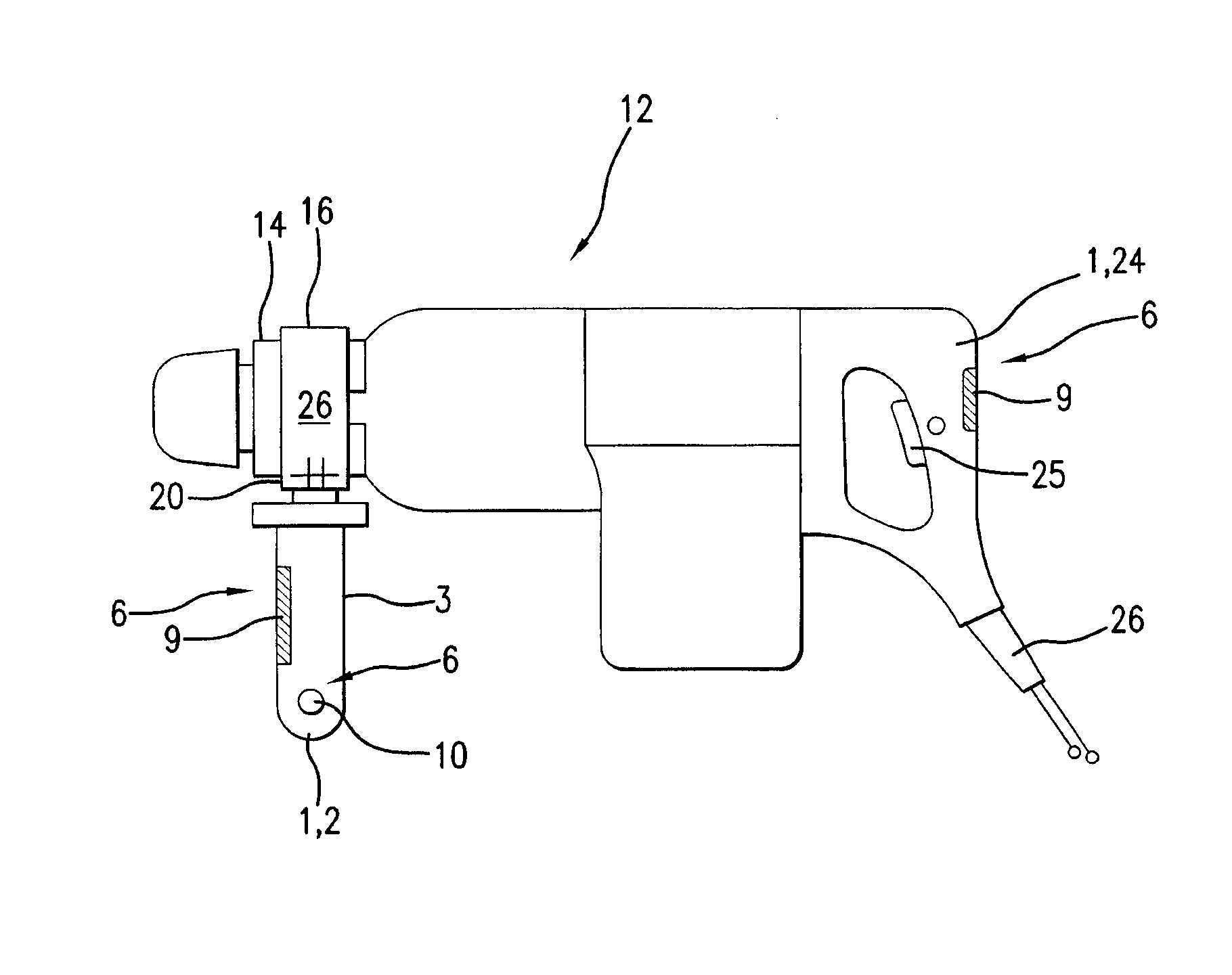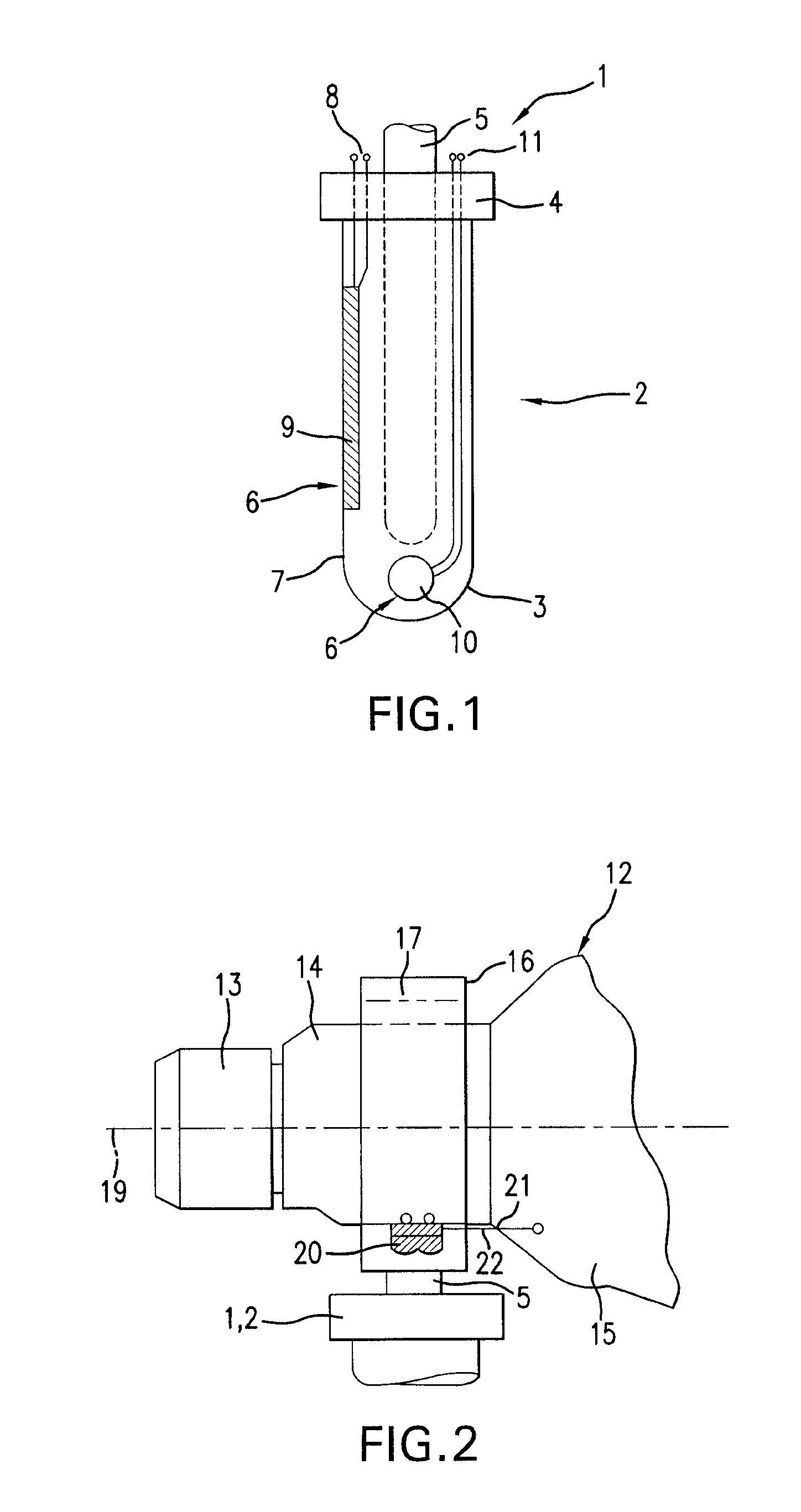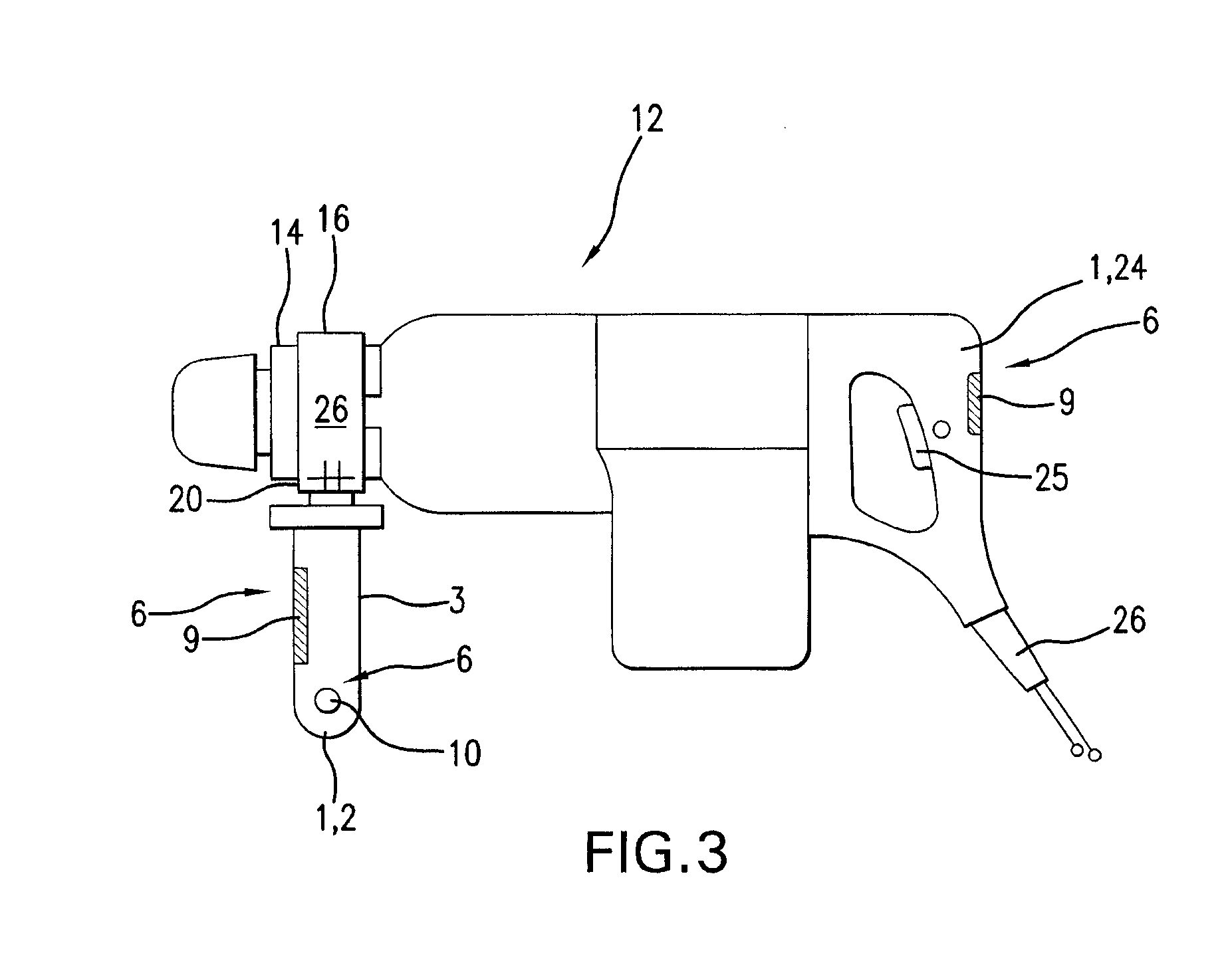Handle with detecting unit
a detection unit and hand-held technology, applied in the field of hand-held detecting units, can solve the problems of machine slipping out, machine rotating around the drill bit axis, operator injuries, etc., and achieve the effect of reducing the power output more or less rapidly and more or less sharply, and rapid stopping of the inserting tool and/or the power end
- Summary
- Abstract
- Description
- Claims
- Application Information
AI Technical Summary
Benefits of technology
Problems solved by technology
Method used
Image
Examples
Embodiment Construction
[0029]FIG. 1 shows a handle 1 that is embodied as an auxiliary handle 2. The handle has a grip 3 that is provided with a hand guard 4. Essentially in the center inside the grip 3, there is a dimensionally stable, essentially rod-shaped support 5; its extension above the hand guard 4 is not shown, thus giving only a partial view of the support 5. This support 5 serves to attach the handle 1 to an electric tool, not shown, and in particular, to transmit force between the grip 3 and the electric tool, not shown. In its grip 3, the handle 1 has a detecting unit 6. This detecting unit is essentially provided over a certain portion of the surface 7 of the grip 3. The span over the surface 7 of the grip 3 must extend far enough to permit an unambiguous detection as to whether the handle is being grasped firmly or only touched loosely. The precise location of the detecting unit 6 on the surface 7 of the grip 3 is unimportant, as long as this function is reliably fulfilled.
[0030]In this exem...
PUM
| Property | Measurement | Unit |
|---|---|---|
| torque | aaaaa | aaaaa |
| diameters | aaaaa | aaaaa |
| forces | aaaaa | aaaaa |
Abstract
Description
Claims
Application Information
 Login to View More
Login to View More - R&D
- Intellectual Property
- Life Sciences
- Materials
- Tech Scout
- Unparalleled Data Quality
- Higher Quality Content
- 60% Fewer Hallucinations
Browse by: Latest US Patents, China's latest patents, Technical Efficacy Thesaurus, Application Domain, Technology Topic, Popular Technical Reports.
© 2025 PatSnap. All rights reserved.Legal|Privacy policy|Modern Slavery Act Transparency Statement|Sitemap|About US| Contact US: help@patsnap.com



